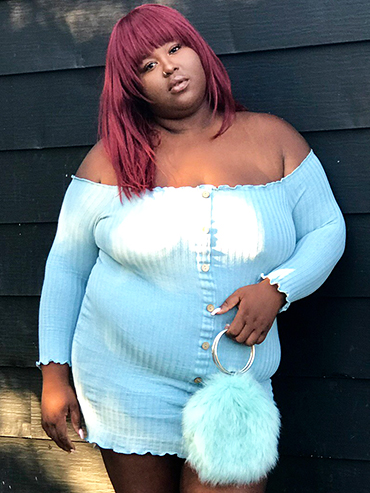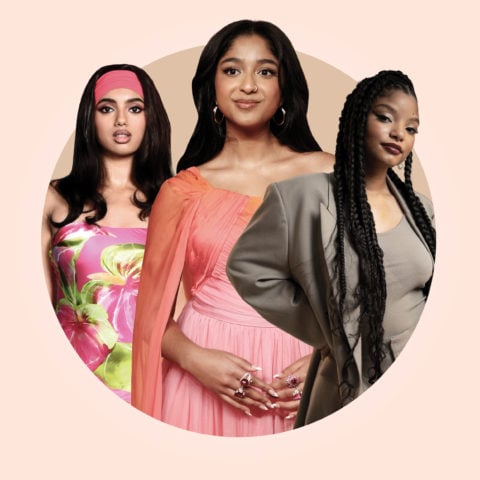It’s 2019 and Body Positivity Still Has a Representation Problem
The co-opting of #bodypositive on social media by brands and influencers is pushing out critical voices

It gives me so much joy to see new #bodypositive Insta accounts pop up from folks who feel empowered in their bodies. But I’m noticing a disturbing trend take over my explore page: brands and health influencers using the “body positive” term to market weight loss programs and mask other harmful facets of diet culture (think Weight Watchers rebranding as WW with a body-positive spin on their marketing content, or bloggers posting “#bodypositive” captions underneath selfies with Flat Tummy Tea, which has dangerous physical side effects). The co-opting of the hashtag to sell diet products is proof of how far the body-positive movement has strayed from its original purpose.
Influencer and eating disorder survivor Lexie Manion summed it up in an interview with Livestrong: “It’s not like [thin, white women] aren’t allowed to partake in the movement. It becomes a problem, however, when it’s 50 photos in a row of more privileged bodies and then one or two photos of more marginalized bodies under a hashtag.” All of this means that the voices behind the original body positive movement, which has roots in radical fat acceptance that’s not just personal but political, are being sidelined over and over again.
Here, in their own words, four folks who work tirelessly to promote the principles of the movement share their thoughts on where body positivity is falling short in 2019, and where we need to go from here.
Garcia Lewin
Influencer, 27, she/her, Toronto, Ont.
There is a lot more representation for women of colour right now, but colourism still exists; not only in body positivity, but in every industry, fairer women are still being chosen over dark-skinned women. There’s also a lot of sizeism within the body positive community, where women on the smaller end of the plus-size scale are chosen to represent the entire plus community. Yes, they’re curvier, but they have smaller waists, smaller boobs, smaller stomachs, and then large thighs and large butts. I don’t see myself a lot of the time. I’m a size 24 all over, so I don’t know how clothes are going to look on me if I’m seeing them on a girl that has a D cup, a size-14 waist and a size-18 butt.
We need to hold brands accountable when they’re using only fair-skinned woman or only size 14s. When I post my photos, the number one comment and DM I get is “Wow, you look like me. We have a similar body type and now I know that I could wear this.” It is up to us as consumers and influencers to say, hey, put me in your ad, let’s use my platform and see how we can mix it up. Or make the demand to see all different types of women.
This is a community: I support the large woman, the medium-sized woman, the black woman, the white woman, the Asian woman—because we’re all essentially fighting for the same thing. When it comes to being a better ally, it boils down to just treating us the same as non-plus size women. Be supportive. And understand that I am enough—I should not have to second-guess stepping out of my home just because I’m plus size.
Shoog McDaniel
Photographer and artist, 38, they/them, Gainesville, Fla.
When people want to do a photo shoot with me, it’s often a healing process, because they’ve lived life in a body that has been looked at in such a negative way. They want to experience being seen, specifically nude, as a full person. My goal is to prove that fatness is inherently beautiful and worthy of love. I want people to see how miraculous our bodies are. I want people to be able to see the beauty in fat bodies through this connection to nature. And then hopefully from that, people start treating fat people differently.
There are certain folks who want to be a part of the body positive movement simply because they want to be part of some kind of marginalized identity. I’ll see someone will write a long post where they’re naked in front of a mirror, and they’ll be like, “I really had to learn to love my body,” and it will be a very normative body—and they’ll be so applauded for that. I think my work really speaks to those who cannot connect to that struggle at all. Because the people that have a hard time accepting themselves in their thin bodies have a vastly different set of experiences than fat people. Fat people are constantly ridiculed, pushed out of places and rejected from doctors, and deal with all of these things that thin people don’t have to deal with. That’s why I feel like I’m involved in the fat positive movement and not really the body positive movement.
There are so many rad fat people doing really important work. The body positive movement needs to pour its energy and celebration into the work of those folks and hold up the most marginalized bodies in our community, because that’s how change occurs.
Heather White
Actor, 36, she/her, Quebec
Where do I see myself represented in body positivity, or in the media at large? Absolutely nowhere. To the best of my knowledge, there has been no one like me in Canadian media in terms of Indigenous female identity and body diversity. I had never seen a plus size woman star in a show, and I certainly had never seen a plus-size Indigenous woman be the star of a show.
There’s this whole other layer of Indigenous identity, where if you don’t look native enough or you don’t look like the stereotypical Pocahontas, you aren’t openly accepted as Indigenous to a non-Indigenous audience. When I auditioned for Mohawk Girls, I honestly didn’t think I stood a chance. This was pre-Melissa McCarthy and pre-Rebel Wilson, so it was a big deal to get the role. And when you look at [my character] Caitlin’s storyline, it’s all about sexuality and relationships. To be a plus size, Indigenous woman in a role like that—I have yet to see it since. The entire media—not just the body-positive movement—is failing Indigenous people by failing to acknowledge that our stories are important.
I grew up in southern Alberta, one of the only Indigenous students in my school and because of my background (my mother is Mohawk and my father is Stoney), I was alone. There was no one else like me. [But] that made me feel like I didn’t have to conform, because no matter what I did, I would never end up like the other kids. It allowed me to be myself and love myself.
My body has served me well. My body is this echo of my ancestors. I look at my hands, my feet, all of these characteristics when I look at myself in the mirror, and I see strength, I see survival and I see myself.

Aggie Sems (a.k.a. Versace La Bismalva)
Burlesque performer, 34, they/them, Toronto, Ont.
I did a burlesque show in March of last year and beforehand, somebody messaged the organizer and said, “I looked at your list of cast members and there are too many fat people.” There were literally three of us out of eight performers. I think for a lot of people, when they think burlesque, they think about “boobies” or hot bodies, and what they don’t remember is that burlesque in its original form is a political act. It’s meant to be taboo and risqué.
When people tell me, “oh, I’m so inspired by you…,” it does make me uncomfortable—I’m just living my life. But that’s also why I do this now, because people say, “I’ve never seen someone perform with a cane, and it’s really beautiful and inspiring.” In part of one of my acts, I actually use my cane to remove my bra. It’s incredibly powerful for a myriad of reasons, and not just because I’m using my cane.
I want to see more disabilibabes, like Rachel Romu who closed the show for Hayley Elsaesser at Toronto Fashion Week in 2018 and walked with their cane. I love the representation where we see people using their mobility devices.
I think one of the biggest issues in body positivity is where brands are using the term to make sales. How do we make people feel bad about their bodies in order to sell them things? Don’t talk about diet pills, talk about health supplements. These brands say they’re “body positive” because they want you to “be your best selves,” but your best self is skinny, white and able-bodied according to the messaging we see.
At the end of the day, I want everybody to feel the way I feel when I lift my veil toward the end of my act and I look out at a group of people who’ve never seen somebody with a cane on a stage at an event that’s meant to be sexy, beautiful and glamourous. And maybe now that they’ve seen somebody like me, they’ll want to see more people like me.
A few other rad body-positive folks you should be following:
- Anshuman Iddamsetty, @boar.lord
- La’ShaunaeSteward, @luhshawnay
- Gemynii, @gemynii
- Andrew Gurza, @theandrewgurza
- TalliOsborne, @nubs416








